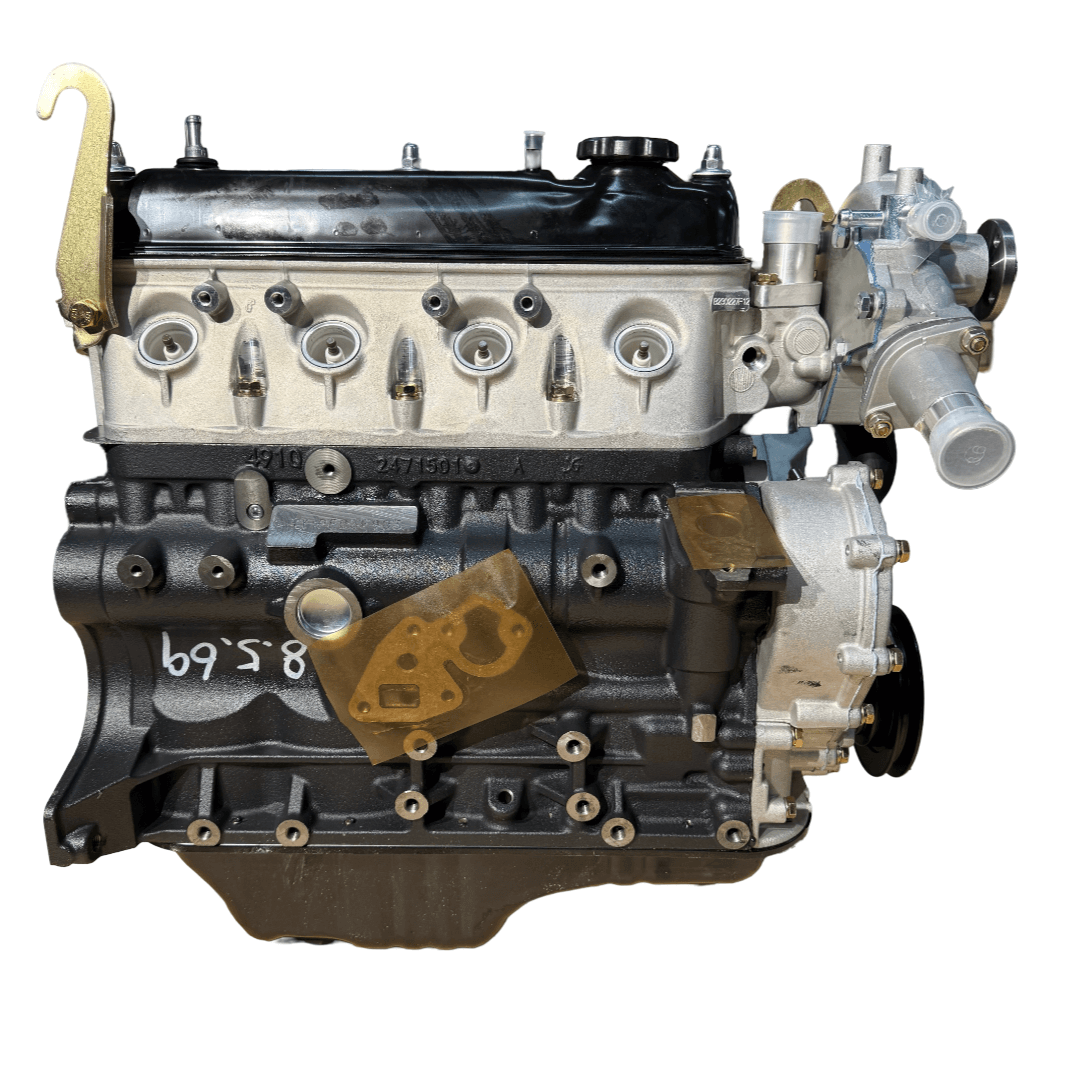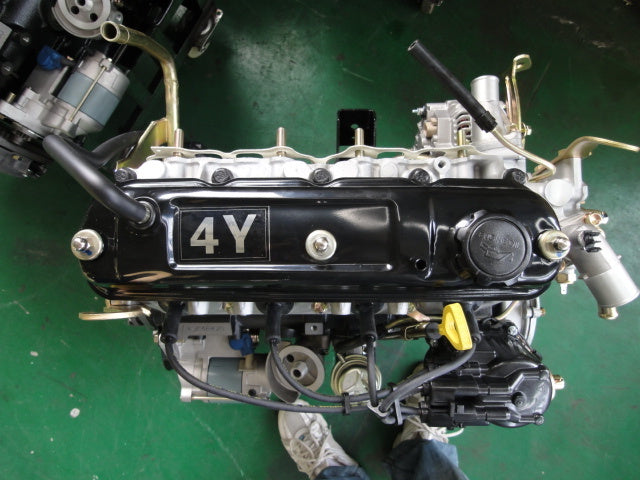Why the Engine Is the most effective Choice for Efficiency and Efficiency in Your Automobile
The engine stays a crucial part in automobile design, mainly due to its considerable influence on both performance and performance. As improvements in innovation make it possible for smaller engines to deliver remarkable power while enhancing gas economy, the integration of functions such as turbocharging and crossbreed systems comes to be progressively essential.
Understanding Engine Kind
Recognizing the different sorts of engines is vital for enhancing performance and performance in vehicle layout. The key engine kinds consist of interior burning engines (ICE), electric engines, and crossbreed systems, each offering distinctive benefits and constraints.
Interior combustion engines, which can be further categorized into gas and diesel variations, rely on the combustion of gas to create power. Gas engines normally provide higher RPMs and much better velocity, while diesel motor are understood for their torque and gas effectiveness, making them suitable for sturdy applications.
Electric engines, on the various other hand, use electric motors powered by batteries or fuel cells. They offer immediate torque shipment, resulting in smooth velocity and lower emissions. The efficiency of electric engines is substantially more than that of ICEs, making them a prominent selection for eco-conscious customers.
Crossbreed systems combine both interior burning and electric engines, leveraging the staminas of both modern technologies. They maximize gas usage by utilizing electric power at lower speeds and changing to gasoline or diesel for greater rates or much heavier lots.
Selecting the right engine kind is crucial for achieving wanted efficiency metrics and ecological sustainability in modern automobile engineering.
The Effect of Engine Dimension
Engine size often plays an essential duty in figuring out a vehicle's performance and effectiveness. Typically gauged in liters or cubic centimeters, engine dimension directly affects the power outcome and torque characteristics of a lorry.
However, increased engine dimension frequently correlates with reduced fuel efficiency. Smaller engines can deliver ample performance for day-to-day driving while promoting better effectiveness, making them a popular selection in portable and mid-size cars.
Additionally, developments in engine layout, such as turbocharging and direct gas injection, allow smaller engines to accomplish power levels similar to their larger equivalents. This pattern stresses the importance of not entirely concentrating on engine size but likewise considering general automobile style and innovation (4y engine). Ultimately, the impact of engine dimension on efficiency and performance underscores the demand for consumers to assess their specific driving requirements and choices when picking an automobile
Advanced Engine Technologies
Technologies in engine modern technologies have considerably reshaped the landscape of auto performance and performance, structure upon the fundamental ideas established by engine dimension. Notably, developments such as turbocharging and straight gas shot have actually made it possible for smaller sized engines to supply power levels formerly related to larger equivalents. Turbochargers press air going into the engine, permitting enhanced power output without a matching rise in engine dimension, while straight injection enhances fuel distribution, enhancing burning performance.
In addition, variable valve timing systems have actually arised as an essential innovation, permitting engines to change shutoff procedure based on driving problems. This versatility boosts both performance throughout velocity and fuel efficiency during cruising. Crossbreed and electric engine technologies additionally illustrate the change in automotive style, integrating typical inner burning engines with electrical motors to take full advantage of effectiveness while reducing emissions.
Moreover, developments in products science have resulted in lighter, much more resilient engine parts, better improving efficiency and long life. The combination of sophisticated electronics and engine control systems also permits real-time modifications, guaranteeing optimum efficiency throughout various problems. Collectively, these advanced engine innovations not only boost lorry performance however also contribute to a more lasting automotive future, demonstrating the ongoing advancement address of engine style.
Harmonizing Power and Efficiency
Striking a balance between power and performance is vital in modern auto design as manufacturers look for to fulfill increasingly rigid emissions policies while satisfying consumer need for efficiency (4y engine). The challenge hinges on maximizing engine qualities to supply durable power outcome without compromising gas economic situation
To achieve this balance, designers utilize different strategies, such as turbocharging, which enhances engine power by compeling in more air, enabling a smaller sized engine variation that boosts fuel performance. Variable shutoff timing technologies additionally play a substantial function, making it possible for engines to readjust their performance characteristics based upon driving problems, thereby boosting both power and performance.
Additionally, developments in products and producing strategies have caused lighter engine components, which lower total vehicle weight and improve fuel effectiveness without jeopardizing power. Crossbreed modern technologies have actually likewise emerged as a practical option, incorporating standard interior burning engines with electrical powertrains to give an increase in performance while maintaining reduced exhausts.

Future Fads in Engine Style

Furthermore, the development of innovative materials, such as lightweight compounds and high-strength alloys, is readied to change engine components. These materials not only lower weight yet likewise improve thermal performance, thereby enhancing efficiency. Additionally, makers are exploring variable compression proportions, allowing engines to adapt to different driving conditions, improving both power output and fuel economic climate.
Further, the increase of expert system and artificial intelligence in engine design is allowing predictive maintenance and real-time efficiency optimization. This technology can lead to engines that self-adjust for maximum performance based on driving patterns.

Final Thought
To conclude, the engine works as an essential element in accomplishing optimum performance and efficiency in modern automobiles. Advanced modern technologies, such as turbocharging and crossbreed systems, enhance power output while reducing fuel usage and discharges. The interaction in between engine dimension and design remains to evolve, driving developments that balance exciting efficiency with environmental sustainability. As automobile design proceeds, the concentrate on establishing effective, powerful engines will stay paramount in forming the future of transport.
Furthermore, developments in engine style, such as turbocharging and straight fuel shot, permit smaller engines to accomplish power levels comparable to check their bigger counterparts.Innovations in engine modern technologies have actually substantially reshaped the landscape of automobile efficiency and performance, structure upon the fundamental concepts established by engine dimension. Turbochargers compress air getting in the engine, permitting for boosted power result without an equivalent increase in engine size, while direct shot optimizes gas shipment, boosting combustion performance.
Hybrid and electric engine innovations further highlight the shift in auto design, integrating conventional inner burning engines with electrical motors to optimize effectiveness while reducing discharges.
Collectively, these sophisticated engine modern technologies not only enhance automobile performance but also contribute to a more sustainable auto future, showing the recurring advancement of engine style. (4y engine)